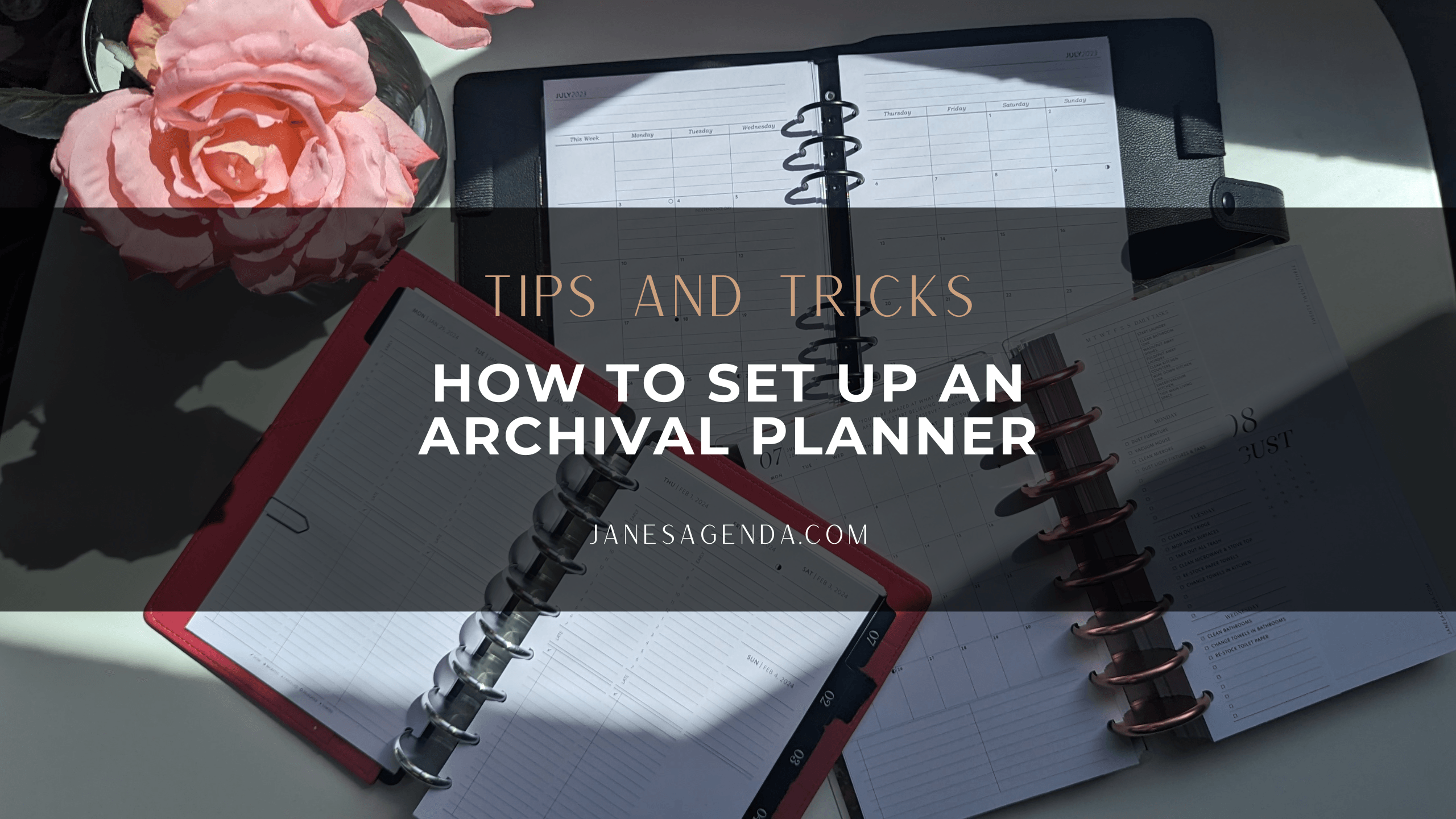Setting up an archival planner is a wonderful way to preserve older important planner pages and cherish special planner memories while minimizing bulk in your Everyday Carry Planner.
To create your archival planner, you'll need an old planner cover and a set of extra discs.
(Note: This is how to set up a discbound archival planner, but the process would be similar for setting up a ringbound version).

-
Gather Materials: Find an old planner cover that you no longer use or have replaced. Ensure you have a set of extra discs, preferably a large size so you have plenty of room for adding pages over time. (I highly recommend our 2 inch discs as they have plenty of room!) Don't have an older cover? Maybe it's time to upgrade to a new one for your every-day-carry (EDC is planner lingo) and use the previous one for your archival planner. See our planner covers here. If you have an extra set of dividers, those can be useful for organizing your pages so you can find them later.
-
Organize Important Pages: Collect pages from your current planner that hold valuable information, such as important notes, significant events, or personal achievements. These could be pages you want to keep for reference or pages that hold sentimental value.
-
Transfer Pages to Archival Planner: Remove the selected pages from your current planner and insert them into the archival planner. Arrange them in chronological order or based on specific themes for easy retrieval in the future.
-
Add Special Memories: In addition to important pages, you can also include special planner memories, such as keepsakes, photographs, or mementos that evoke cherished moments. I like to record historical data on these pages as well, that way if I want to see how much my debt or savings, or business based metrics were at, I can find it later with ease.
-
Maintain Regular Updates: As time goes on, continue to transfer older important pages and memories into the archival planner. This keeps your primary planner neat and uncluttered while preserving meaningful content in a separate keepsake. I move my pages monthly, taking out the month that just passed, adding anything I'll need to know to future pages, then storing the old pages in my archival planner.
-
Store Safely: Place your archival planner in a safe and secure location, ensuring it remains well-preserved and protected. Mine sits on my bookshelf, but I've heard of people keeping them in a safe. You decide how precious this planner is and where to store it.
Using your archival planner:
- Refer to it for historical context or past information when needed, without cluttering your current planner.
- Reminisce over special planner memories, allowing the nostalgia to inspire and motivate you in your current planning endeavors.
- Add a new dimension to your planning experience by honoring the journey you've taken so far.
- If you archive items regularly, you may want to consider keeping one for each year.
By setting up and utilizing an archival planner, you create a treasure trove of your planner journey, preserving its essence and significance for years to come.
If this post spoke to you, perhaps you'll be interested in how I store all my extra planner items. Read about it here.



